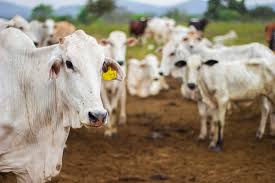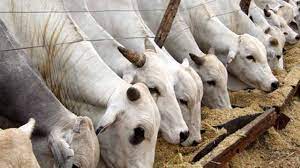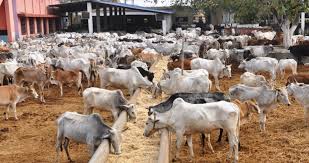In this article, the focus is on cattle, otherwise referred to as Large Ruminants. Cattle are a major source of livelihood for indigenous owners in the tropical regions of Nigeria.
Improving and increasing cattle productivity is a key pathway to raising the standard of living and enhancing the nutritional status of both the owners and the nation at large.
This improvement is achieved through the supply of meat and milk, draught power, manure, blood meal, and their relevance in social functions such as mobile banking and insurance against crop failures.
Read Also: General Management Considerations in Livestock Management
Origin and History of Cattle Domestication

The family of animals that includes all domestic cattle is known as Bovidae. There are two main types of domestic cattle in the world:
i. Bos taurus: humpless cattle
ii. Bos indicus:humped cattle
The Hamitic longhorn and shorthorn types are believed to be the ancestors of all Bos taurus breeds. The origin of humped cattle, or Zebu, is traced to Western Asia. Hamitic longhorn, shorthorn, and Zebu-type cattle were introduced into Africa by immigrants from Western Asia.
Importance of Cattle
1. Meat and milk supply: Cattle play a significant role in meeting over 70 percent of Nigeria’s meat demand, while their milk is the most widely accepted among all ruminants.
2. Draught power: Cattle are a vital source of farm power in Nigeria and other regions. They are accessible to peasant farmers who cannot afford mechanised equipment. Their use reduces the cost of crop production and eases labor in farming operations.
3. Manure: Cattle dung is essential in maintaining soil fertility. Farmyard manure, made up of cattle faeces, fertilises the soil and is rich in N.P.K. nutrients. On mixed farms, it helps lower the cost of synthetic fertiliser.
4. Blood meal, hooves, and horns: Cattle hooves and horns, being fibrous in nature, are used in the gum industry. Blood and bone meal are useful in formulating livestock feeds.
5. Farm diversification: Cattle support farm diversification by producing both milk and meat. Crop residues can also be fed to the animals, keeping the farmer productive year-round.
6. Social functions: Cattle signify prestige and social status based on their number. Among nomads, they serve as mobile banks; for mixed farmers, they act as insurance against crop failure. They also play key roles in religious ceremonies and traditional marriages.
Read Also: Bird of Paradise Flower (Strelitzia reginae): All You Need To Know About
Classification of Cattle Based On Utility

Cattle are classified according to their use into dairy, beef, draught, and multi-purpose types.
1. Dairy cattle: These have narrow body conformation with wide hindquarters. Their udders are large and well-developed, and the top line is straight with a wedge-shaped form. Due to generations of selection, they are generally docile. Few African breeds are distinctly recognised for dairy purposes.
2. Beef cattle: These are blocky, with a rapid growth rate and are typically more aggressive than dairy breeds. The Boran, found in East Africa, is one of the most recognised African beef breeds. A notable characteristic is their low skeletal-to-muscle ratio, ensuring a high meat yield.
3. Draught cattle: Known for their hardiness and ability to endure physical stress during work, these cattle are typically docile and are common in sedentary agrarian societies across Asia and Africa. Breeds in West Africa, East Africa, and Southeast Asia can often be converted into draught animals, usually through the castration of young bulls to enhance docility.
4. Multi-purpose cattle: In less developed regions, cattle are often not bred for a single purpose. Instead, they serve various roles depending on the owner’s needs. These cattle may produce both milk and meat, or be used for meat and draught power, or draught power and milk.
Do you have any questions, suggestions, or contributions? If so, please feel free to use the comment box below to share your thoughts. We also encourage you to kindly share this information with others who might benefit from it. Since we can’t reach everyone at once, we truly appreciate your help in spreading the word. Thank you so much for your support and for sharing!

